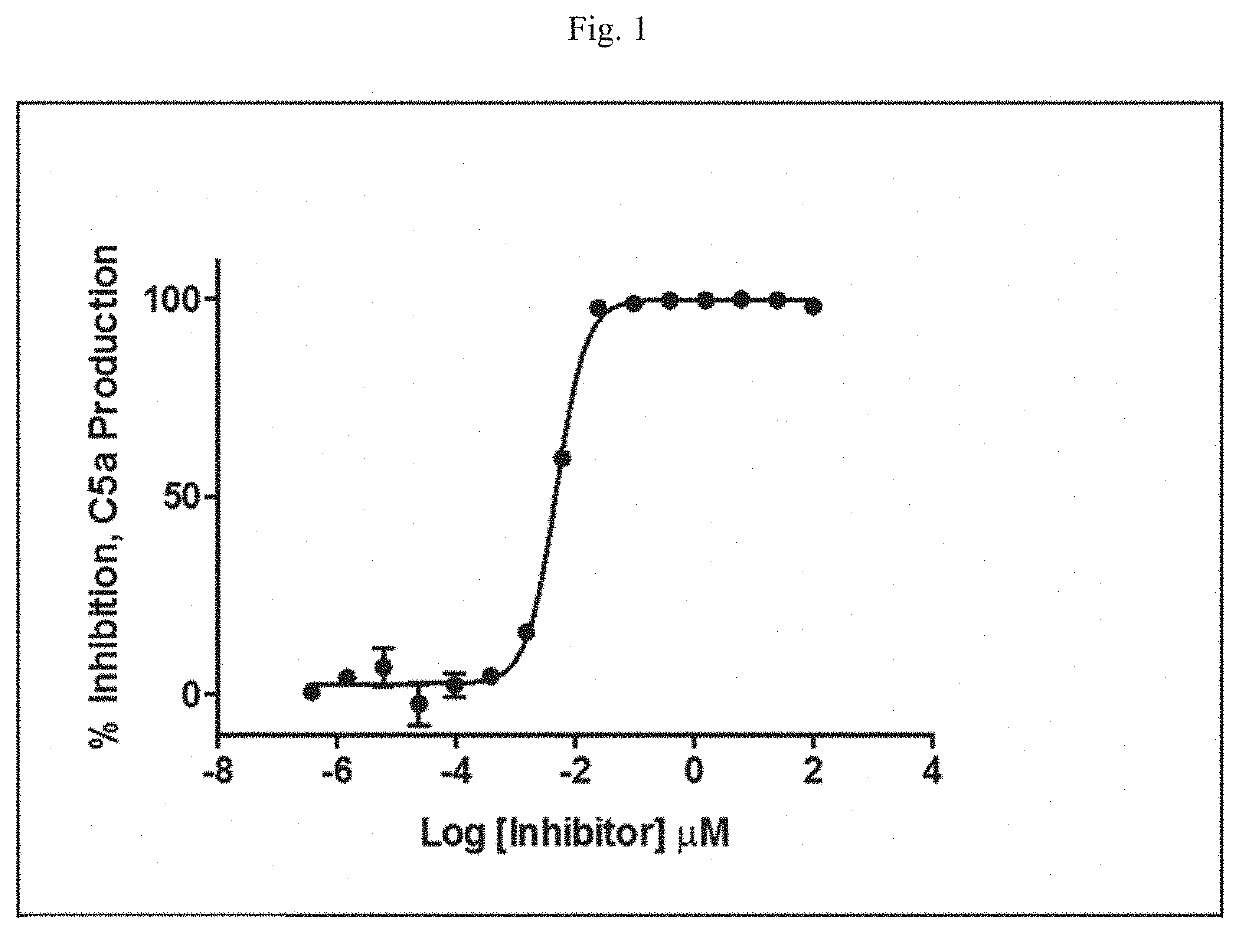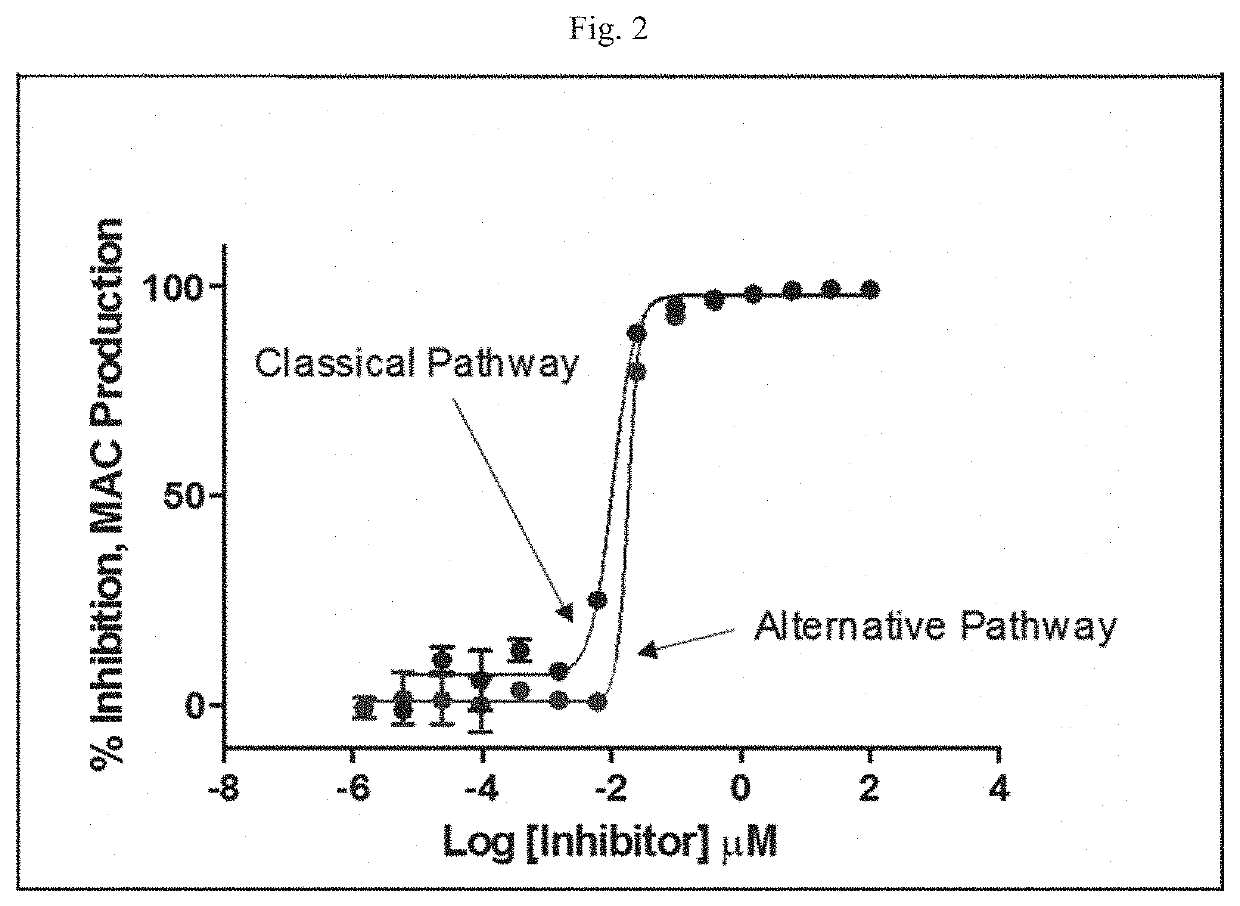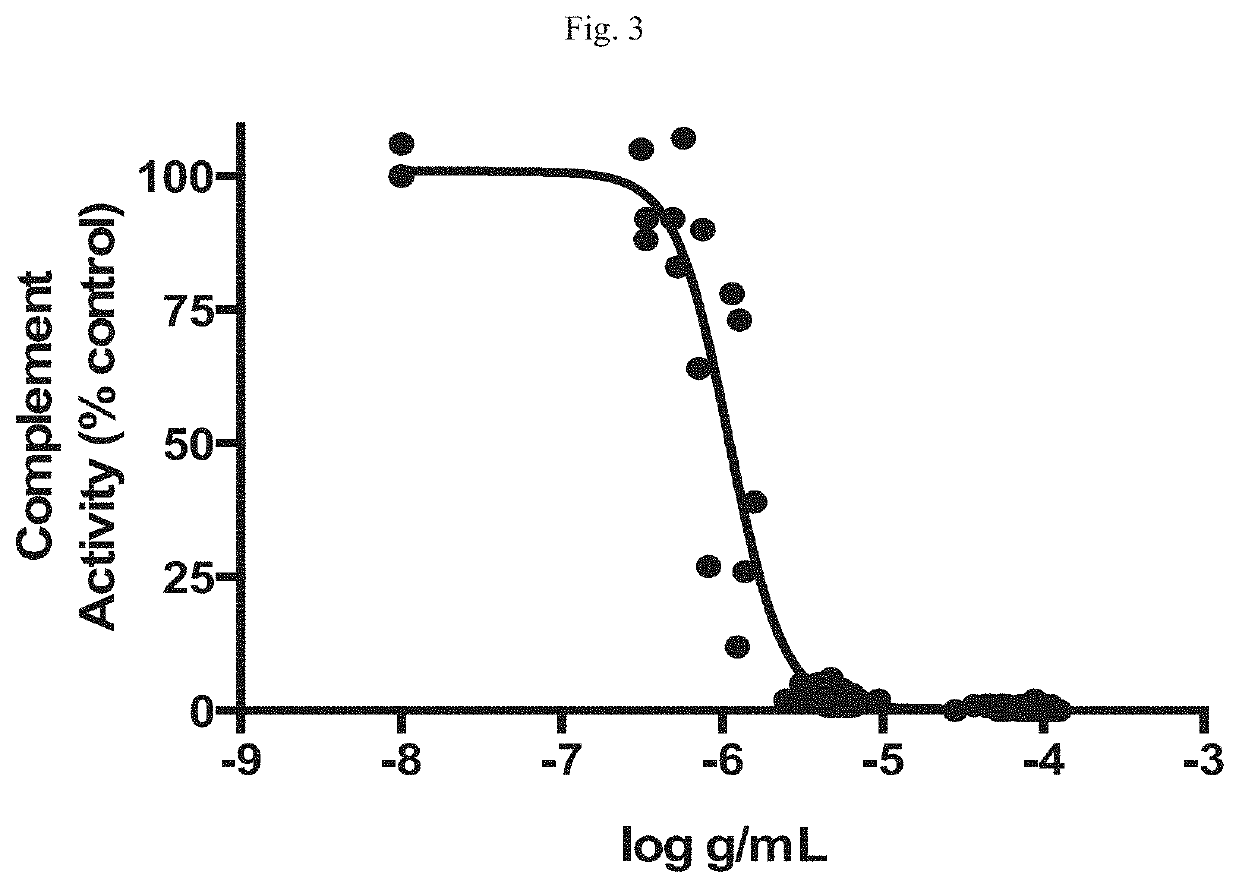Modulators of complement activity
- Summary
- Abstract
- Description
- Claims
- Application Information
AI Technical Summary
Benefits of technology
Problems solved by technology
Method used
Image
Examples
example 1
on of R5000 Aqueous Solution
[0272]Polypeptides were synthesized using standard solid-phase Fmoc / tBu methods. The synthesis was performed on a Liberty automated microwave peptide synthesizer (CEM, Matthews NC) using standard protocols with Rink amide resin, although other automated synthesizers without microwave capability may also be used. All amino acids were obtained from commercial sources. The coupling reagent used was 2-(6-chloro-1-H-benzotriazole-1yl)-1,1,3,3,-tetramethylaminium hexafluorophosphate (HCTU) and the base was diisopropylethylamine (DIEA). Polypeptides were cleaved from resin with 95% TFA, 2.5% TIS and 2.5% water for 3 hours and isolated by precipitation with ether. The crude polypeptides were purified on a reverse phase preparative HPLC using a C18 column, with an acetonitrile / water 0.10 / TFA gradient from 20%-50% over 30 min. Fractions containing pure polypeptides were collected and lyophilized and all polypeptides were analyzed by LC-MS.
[0273]R5000 (SEQ ID NO: 1)...
example 2
inistration and Storage
[0276]R5000 is administered by subcutaneous (SC) or intravenous (IV) injection and the dose administered (dose volume) is adjusted based on subject weight on a mg / kg basis. This is achieved using a set of fixed doses aligned to a set of weight brackets. In total, human dosing supports a broad weight range of 43 to 109 kg. Subjects who present with a higher body weight (>109 kg) are accommodated on a case-by-case basis, in consultation with a medical monitor.
[0277]R5000 is stored at 2° C. to 8° C. [36° to 46° F.]. Once dispensed to subjects, R5000 is stored at controlled room temperature (20° C. to 25° C. [68° F. to 77° F.]) for up to 30 days, and is protected from sources of excessive temperature fluctuations such as high heat or exposure to light. Storage of R5000 outside of room temperatures is preferably avoided. R5000 may be stored for up to 30 days under these conditions.
example 3
Testing
[0278]Stability testing is carried out according to the International Conference on Harmonisation (ICH) Q1A “Stability of New Drug Substances and Products.” Samples from the aqueous solution of Example 1 are held at 3 temperatures: −20° C., 5° C., and 25° C. Testing intervals are at 1, 2, and 3 months, and thereafter every 3 months up to 24 months. Samples are tested for appearance (e.g., clarity, color, presence of precipitate), pH, osmolality, concentration, purity, target activity (e.g., by RBC lysis assay), particulate levels, endotoxin levels, and sterility. Samples are considered stable if, at each of the temperature conditions tested, the samples have a clear, colorless appearance with no visible particles; a pH of 7±0.3; an osmolality of 260 to 340 mOsm / kg; a purity of ≥95% (and no single impurity >3%); target activity that is comparable to a reference standard; particulate levels of ≤6,000 particulates per vial for ≥10 μm particles and levels of ≤600 particulates per...
PUM
| Property | Measurement | Unit |
|---|---|---|
| Time | aaaaa | aaaaa |
| Time | aaaaa | aaaaa |
| Time | aaaaa | aaaaa |
Abstract
Description
Claims
Application Information
 Login to View More
Login to View More - R&D
- Intellectual Property
- Life Sciences
- Materials
- Tech Scout
- Unparalleled Data Quality
- Higher Quality Content
- 60% Fewer Hallucinations
Browse by: Latest US Patents, China's latest patents, Technical Efficacy Thesaurus, Application Domain, Technology Topic, Popular Technical Reports.
© 2025 PatSnap. All rights reserved.Legal|Privacy policy|Modern Slavery Act Transparency Statement|Sitemap|About US| Contact US: help@patsnap.com



